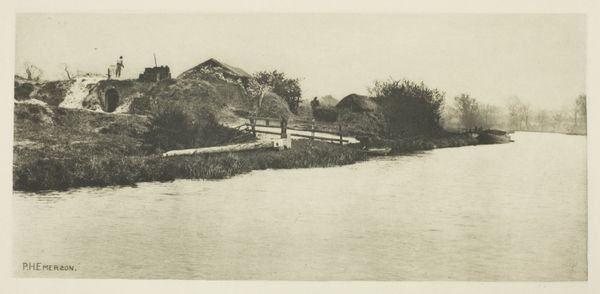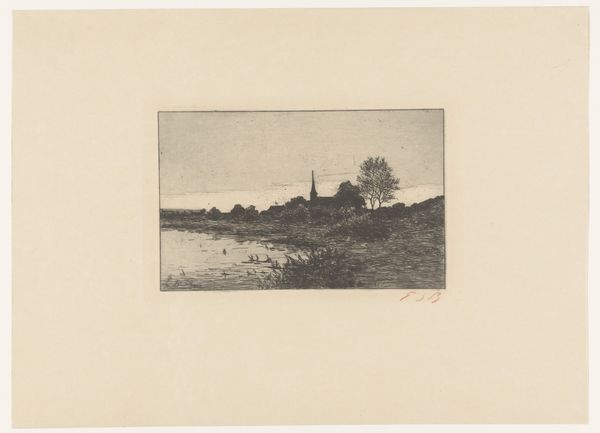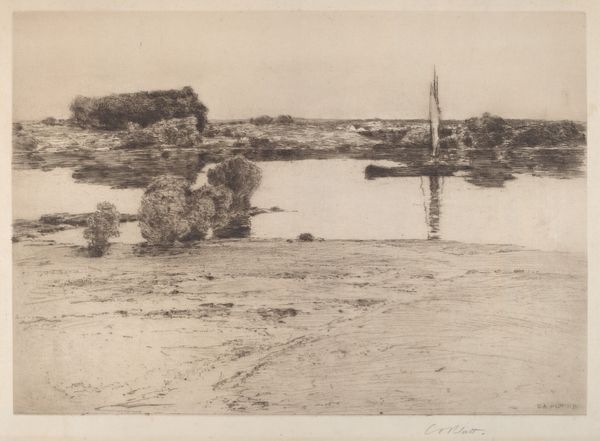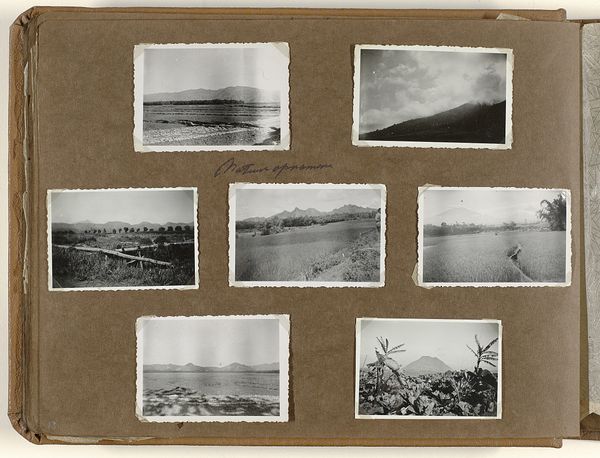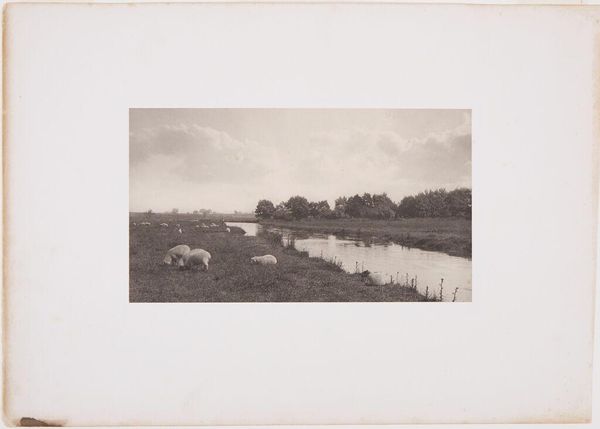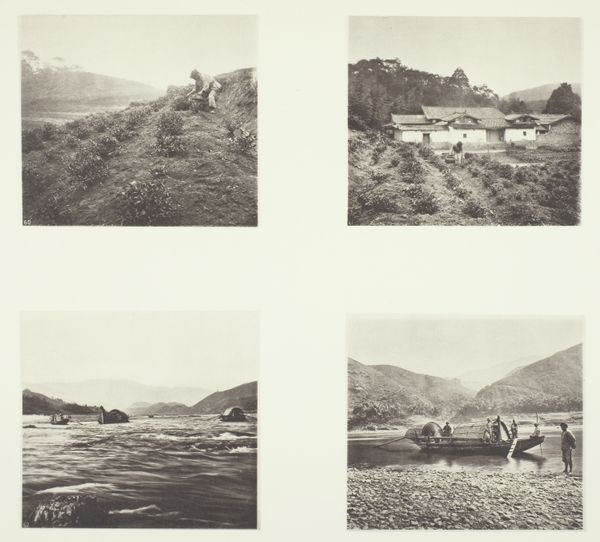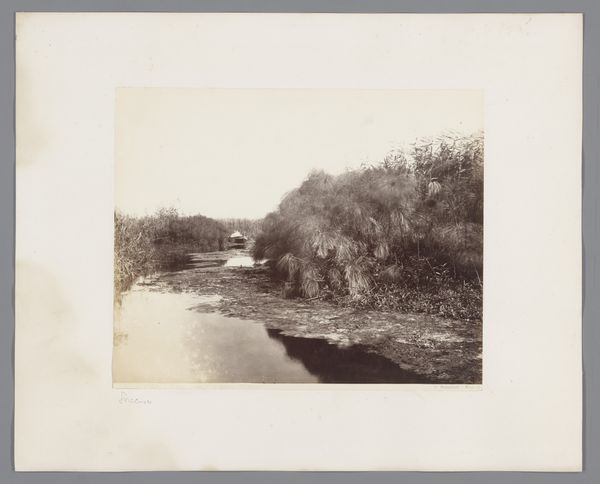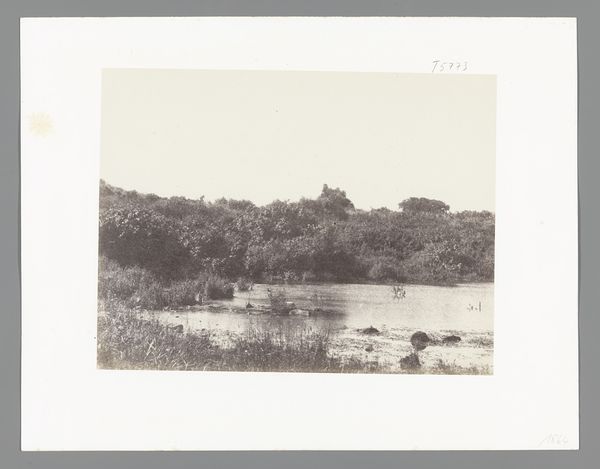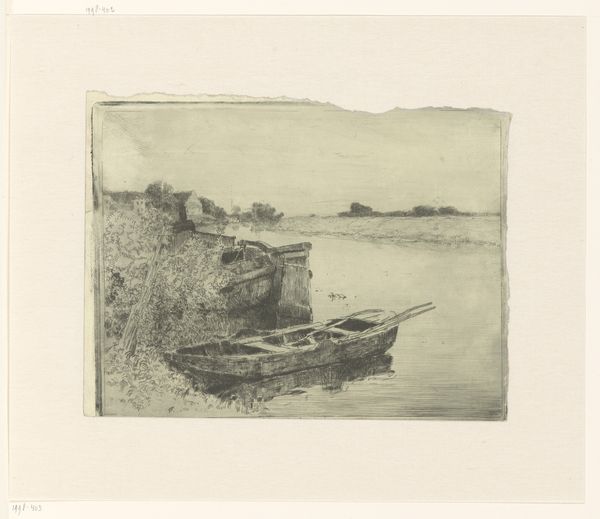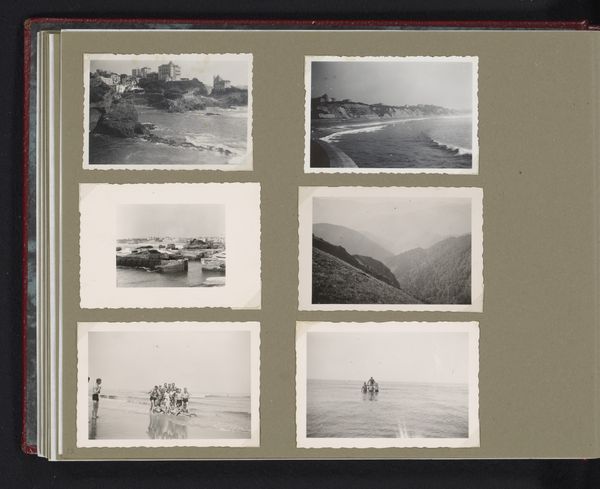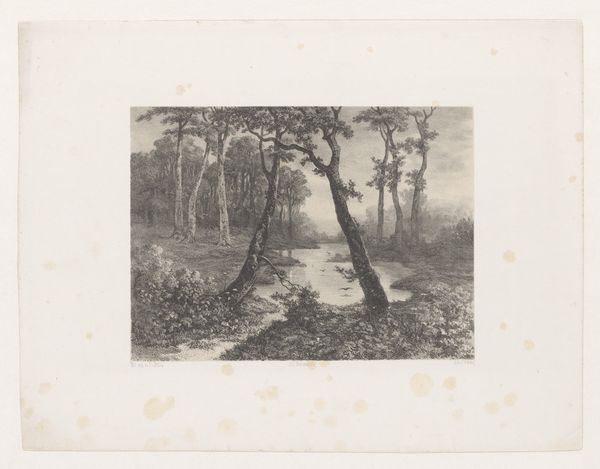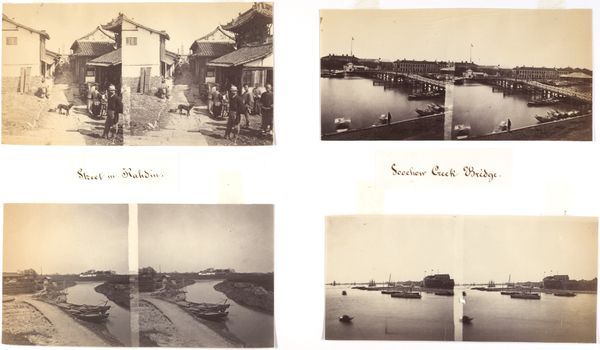
A Country Road near Taiwanfu; A Catamaran; Chain Pumps; Rock Inscriptions, Amoy c. 1868
0:00
0:00
photography
#
16_19th-century
#
landscape
#
photography
#
orientalism
Dimensions: 10.3 × 12.7 cm (upper left image); 10.2 × 12.3 cm (upper right image); 11.4 × 12.5 cm (lower left image); 10.9 × 12.6 cm (lower right image); 34.7 × 47.2 cm (album page)
Copyright: Public Domain
Curator: Before us we have "A Country Road near Taiwanfu; A Catamaran; Chain Pumps; Rock Inscriptions, Amoy," a photographic work from around 1868 by John Thomson. It presents a series of four distinct scenes, alluding to Taiwanese landscapes and cultural practices of the time. Editor: It's really quite lovely. The images feel like a window into a distant world, almost sepia-toned memories caught in a frame. Each snapshot holds a stillness, but it's full of human endeavor and natural wonder. I get the distinct feeling of humidity and warmth looking at it. Curator: Precisely. Notice the compositional organization. Thomson employs a grid-like structure, presenting each photograph as a separate yet interconnected narrative. This arrangement invites the viewer to draw parallels between the diverse subjects depicted – from rural landscapes to maritime activities. The use of light and shadow, too, contributes significantly to the overall aesthetic effect. The details, particularly the tones and textures within the top left image, for example, create a complex surface for the eye to roam over. Editor: Absolutely, it is almost a cultural mosaic of late Qing Dynasty Taiwan through a Western lens. The bottom left image depicting the "Chain Pumps" particularly strikes me – the way the figures are positioned creates a sense of rhythmical, almost hypnotic, work. It makes you wonder about the daily lives and struggles of the people captured, doesn't it? I feel drawn into their story. Curator: Indeed. Thomson was adept at capturing these human elements within the context of his landscape photography. The choice of albumen silver print enhances the photograph's ability to render fine details. It becomes a historical document – not just an aesthetic exercise but a sociopolitical record of the East viewed through the eye of a European, replete with inherent colonial overtones. Editor: Right. I agree. What began for me as simply beautiful compositions quickly turns into thoughts on power, and observing vs experiencing. The soft edges and warm tones do tug at the heartstrings but the brain kicks in before you can fully let go. A beautiful tension is at play within. Curator: A fair summary indeed, and it’s perhaps this very tension between the aesthetic and the sociopolitical, the seen and the unseen, that makes it such a compelling and resonant work of art, wouldn't you agree? Editor: Absolutely. It's a quiet marvel, hinting at much larger conversations and questions. A beautiful dance between image and history.
Comments
No comments
Be the first to comment and join the conversation on the ultimate creative platform.
